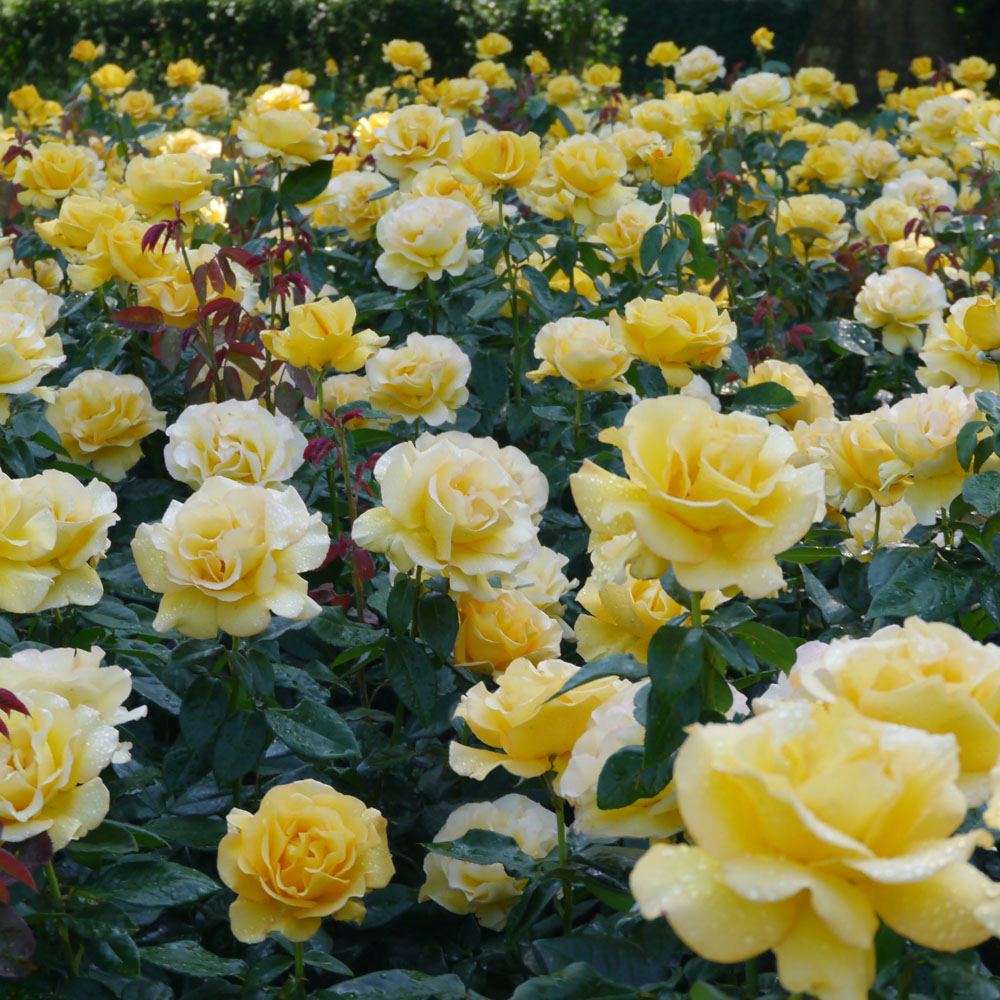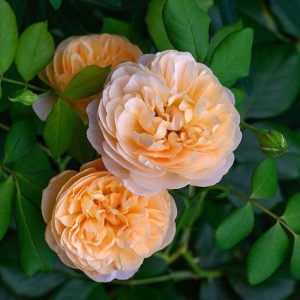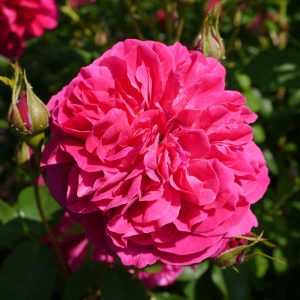Description
Introducing the radiant Rosa ‘The Golden Anniversary’ – a stunning hybrid tea rose that offers a delightful light fragrance. Growing up to a height of 60cm and spreading 30cm, this rose will shine as a specimen plant or when planted in mixed borders. Its small size makes it perfect for planting in a container, allowing you to enjoy its beauty up close. But it’s not just its looks that make this rose special. With good disease resistance, it’s a hardy and low-maintenance option for any gardener. And as a repeat-flowering rose, you’ll enjoy its golden yellow blooms throughout the summer, bringing a touch of warmth and joy to your outdoor space. Bred by Poulsun, ‘The Golden Anniversary’ is a true celebration of nature’s beauty, perfect for marking a special occasion or simply brightening up your garden.
Key Facts
- Common Name(s):The Golden Anniversary Rose
- Hardiness:Fully hardy
- How big will I get? Rosa ‘The Golden Anniversary’ can grow to a height of 0.6m and a spread of 0.3m.
- Did You Know That:The world’s largest rose bush is in Tombstone, Arizona, and covers an area of over 8,000 square feet?
Plant Calendar
A rough guide to how this plant will change through the year.
| Jan | Feb | Mar | Apr | May | June | July | Aug | Sept | Oct | Nov | Dec | |
| Flowering Time |  |
 |
 |
 |
||||||||
| Foliage Colour |  |
 |
 |
 |
 |
 |
 |
 |
 |
| J | F | M | A | M | J | J | A | S | O | N | D |
 |
 |
 |
 |
||||||||
 |
 |
 |
 |
 |
 |
 |
 |
 |
Care Guide

Soil Requirements
Rosa ‘The Golden Anniversary’ prefers moist but well-draining soil. This plant can grow in soil with a wide range of pH levels, it is not picky about the pH level of the soil.

Best Position
Rosa ‘The Golden Anniversary’ prefers a sheltered position and requires full sun to thrive, this consists of more than six hours of direct sunshine per day.

Maintenance
Rosa ‘The Golden Anniversary’ should be pruned in late winter or early spring, before new growth begins. Begin by removing any dead, damaged, or diseased wood from the plant, making sure to sterilize your pruning shears between cuts to prevent the spread of disease. Next, cut back any old wood to encourage the growth of new shoots, cutting back to a healthy bud or lateral branch. Remove any weak or spindly growth that won’t produce good blooms, focusing on leaving strong, healthy shoots that will produce plenty of flowers. Finally, shape the plant by cutting back any overly long or unruly shoots, creating a more compact, attractive plant. By following these steps, you can keep your shrub roses healthy and blooming beautifully year after year.

Pest, Diseases and Wildlife
Rosa ‘The Golden Anniversary’ can have problems with aphids, leafhoppers, and scale insects , it can be vulnerable to certain diseases such as black spot, rust and powdery mildews. It is also known to attract bees, butterflies and other pollinators. It is not considered to be toxic.





